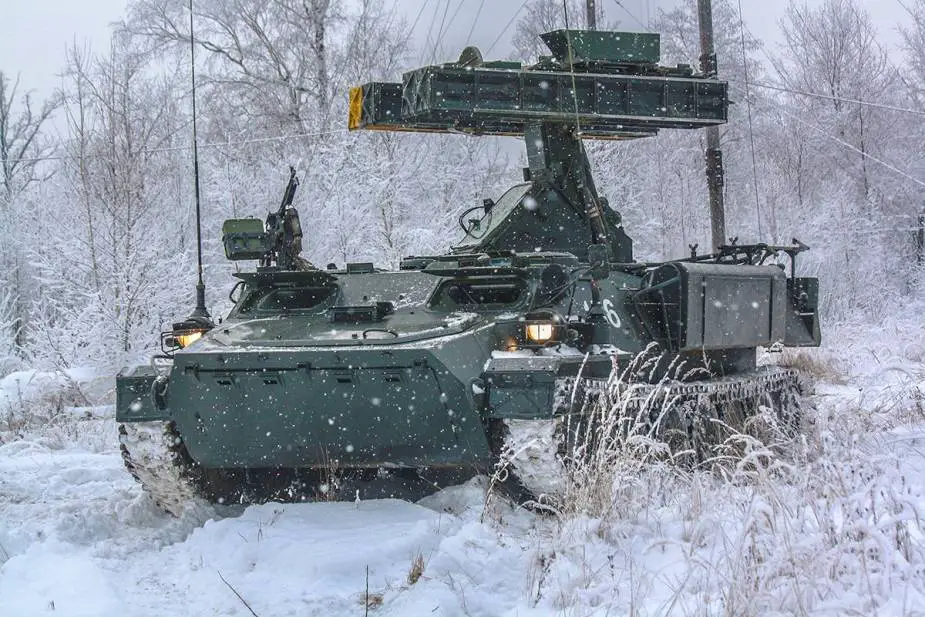Russian Ptitselov SAM system to get new combat control unit
Russia’s newest Ptitselov (Fowler) short-range air defense (AD) system will receive an advanced artificial intelligence control unit that will allow the weapon to optically distinguish hostile fixed- and rotary-wing aircraft, cruise missiles, and unmanned aerial vehicles (UAVs) and attack them, according to the Izvestia newspaper.
Follow Army Recognition on Google News at this link

Ptitselov (Fowler) short-range air defense system armed with Strela-10MN missiles in service with some units of the Airborne Forces (Picture source: Russian MoD)
Unspecified industrial and military sources told the Izvestia that the decision to fit the Ptitselov air defense system with a new artificial intelligence control subsystem had already been made. Moreover, this project now includes a competition for the development of the design of advanced optical-electronic system for Ptitselov’s combat vehicles. The project’s terms of reference envisage high level of the AD system’s automation and the creation of algorithms that process the images of a target. These works are planned to be finished before the end of 2021.
Once the Ptitselov vehicle reaches a firing position, it receives a sector and a range of altitudes to control. If an aerial object is not recognized as a friendly one, the system opens fire using its optical-electronic unit that works round-the-clock in electronically contested areas, where an enemy employs high-energy lasers or electronic warfare devices to disrupt optics.
The Ptitselov is suggested to be a family of short/very short-range surface-to-air missile (SAM) weapons intended for both the Army (SV) and the Airborne Troops (VDV). They will stand between the Verba man-portable air defense systems (MANPADS) and the Pantsir (NATO reporting name: SA-22 Greyhound) self-propelled anti-aircraft guided missile (SPAAGM) and Buk (SA-17 Grizzly) SAM systems.
The Ptitselov research-and-development work and trials are planned to be finished in late 2022. The Army and the Airborne Troops will receive the system in different configurations: both BMP-3 infantry fighting vehicle (IFV) and BMD-4M air-droppable IFV are suggested to be its carriers.
According to military expert Viktor Murakhovskiy, the Ptitselov may replace the Strela-10 (SA-10 Gopher) short-range SAM system, the baseline variants of which date back to the late 1970s. “The new weapon will be much more effective,” said the specialist.
In Autumn 2020, the conflict in Nagorny-Karabakh demonstrated the effectiveness of unmanned aerial vehicles (UAVs) and loitering munitions (LMs), while Karabakh’s short-range/very short-range air defense (SHORAD/VSHORAD) network weltered in blunders. “In fact, this fight for air superiority was a standoff between UAVs/LMs and the outdated AD network of Nagorny-Karabakh’s troops. They used the Strela-10, S-125 [SA-3 Goa], Shilka, and Osa [SA-8 Gecko] air defense weapons. However, these assets were not brought under a single umbrella and were not integrated with reconnaissance units. Therefore, they just could not shoot down UAVs flying at an altitude of more than 5 km,” said Murakhovskiy. “We should have modern weapons at all levels of air defense. We now deploy modern medium- and long-range AD systems, while there have been no new SHORAD/VSHORAD assets. I hope that the Ptitselov will reinforce our AD network,” the expert concluded.
The Ptitselov was originally suggested to be an airdroppable SHORAD/VSHORAD system for the Airborne Troops; it combat effectiveness was planned to exceed that of the Strela-10M3 system by two times. However, the system was unified for both the Army and the Airborne Troops in order to replace several existing systems.
The contract for the development of the Ptitselov is known to be signed in May 2018. The final design of the vehicle has yet to be unveiled. The vehicle’s principal design review was finished in early 2019, according to the Izvestia.
© Copyright 2020 TASS / Army Recognition Group SPRL. All rights reserved. This material may not be published, broadcast, rewritten or redistributed.




























